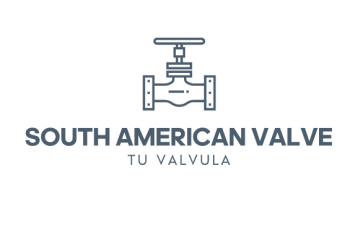Suction Diffuser
A suction diffuser is a type of flow conditioner that is used to improve the flow characteristics of fluid entering a centrifugal pump. It is a special type of strainer that combines a strainer and a flow straightener in a single unit. The suction diffuser is typically installed at the inlet of a centrifugal pump to remove debris from the fluid and to provide a smooth and uniform flow of fluid to the pump.
The suction diffuser has several key components, including:
- Strainer: The strainer is a mesh screen that is designed to remove debris from the fluid before it enters the pump. The size of the strainer mesh depends on the application, and it can be easily removed for cleaning.
- Flow straightener: The flow straightener is a series of vanes that are designed to straighten and smooth the flow of fluid entering the pump. The flow straightener helps to eliminate turbulence and improve the efficiency of the pump.
- Diffuser: The diffuser is a cone-shaped section that is located downstream of the strainer and flow straightener. The diffuser helps to reduce the velocity of the fluid and convert the kinetic energy of the fluid into pressure energy. This results in a more efficient pumping process.
- Inlet connection: The inlet connection is the connection point where the suction diffuser is installed to the inlet piping of the centrifugal pump.
Suction diffusers are commonly used in a wide range of applications, including heating, ventilation, and air conditioning (HVAC) systems, water treatment plants, and industrial process systems. They are particularly useful in applications where the fluid being pumped contains debris or other contaminants, as the strainer helps to prevent damage to the pump and other downstream equipment.
Advantages
- Improved pump efficiency: Suction diffusers help to reduce turbulence and improve the flow characteristics of fluid entering the pump. This can result in improved pump efficiency and reduced energy consumption.
- Reduced maintenance: The strainer component of the suction diffuser helps to remove debris from the fluid before it enters the pump. This can reduce the frequency of pump maintenance and repair, as well as the risk of damage to downstream equipment.
- Cost savings: By improving pump efficiency and reducing maintenance requirements, suction diffusers can lead to cost savings over the long term. Additionally, they can be less expensive than installing separate flow straighteners and strainers.
- Easy installation: Suction diffusers are designed for easy installation at the inlet of centrifugal pumps. This can reduce installation time and labor costs.
- Versatility: Suction diffusers can be used in a wide range of fluid handling applications, including HVAC systems, water treatment plants, and industrial process system.
Applications
- HVAC systems: Suction diffusers are commonly used in heating, ventilation, and air conditioning (HVAC) systems to improve the flow characteristics of fluid entering centrifugal pumps. They help to reduce turbulence and improve pump efficiency, which can result in lower energy consumption and improved system performance.
- Water treatment plants: Suction diffusers are also used in water treatment plants to remove debris from water before it enters the pumping system. This helps to prevent damage to pumps and other downstream equipment, and can also improve the quality of the water being treated.
- Industrial process systems: Suction diffusers are used in a variety of industrial process systems to improve the flow characteristics of fluid entering pumps. They are particularly useful in applications where the fluid being pumped contains debris or other contaminants.
- Irrigation systems: Suction diffusers can also be used in irrigation systems to remove debris from water before it enters the pumping system. This can help to prevent damage to pumps and other downstream equipment, as well as improve the quality of the water being used for irrigation.
A suction diffuser typically consists of the following parts:
- Inlet connection: The inlet connection is the point where the suction diffuser is connected to the inlet piping of the centrifugal pump. The inlet connection can be flanged, threaded or grooved depending on the system requirements.
- Strainer basket: The strainer basket is a removable component that is designed to remove debris from the fluid before it enters the pump. The size of the strainer mesh depends on the application, and it can be easily removed for cleaning.
- Flow straightening vanes: The flow straightening vanes are located downstream of the strainer basket and are designed to smooth the flow of fluid and eliminate turbulence. This helps to improve the efficiency of the pump.
- Diffuser cone: The diffuser cone is a cone-shaped section that is located downstream of the flow straightening vanes. The diffuser cone helps to reduce the velocity of the fluid and convert the kinetic energy of the fluid into pressure energy. This results in a more efficient pumping process.
- Outlet connection: The outlet connection is the point where the suction diffuser is connected to the inlet piping of the centrifugal pump. The outlet connection can be flanged, threaded or grooved depending on the system requirements.
- Drain and vent connections: The drain and vent connections are used to drain the fluid from the suction diffuser during maintenance and to vent any trapped air in the system.
- Pressure gauge taps: Pressure gauge taps are provided to measure the pressure drop across the strainer basket, flow straightening vanes and diffuser cone. This helps to monitor the performance of the suction diffuser and the overall system efficiency.
Suction Diffuser


